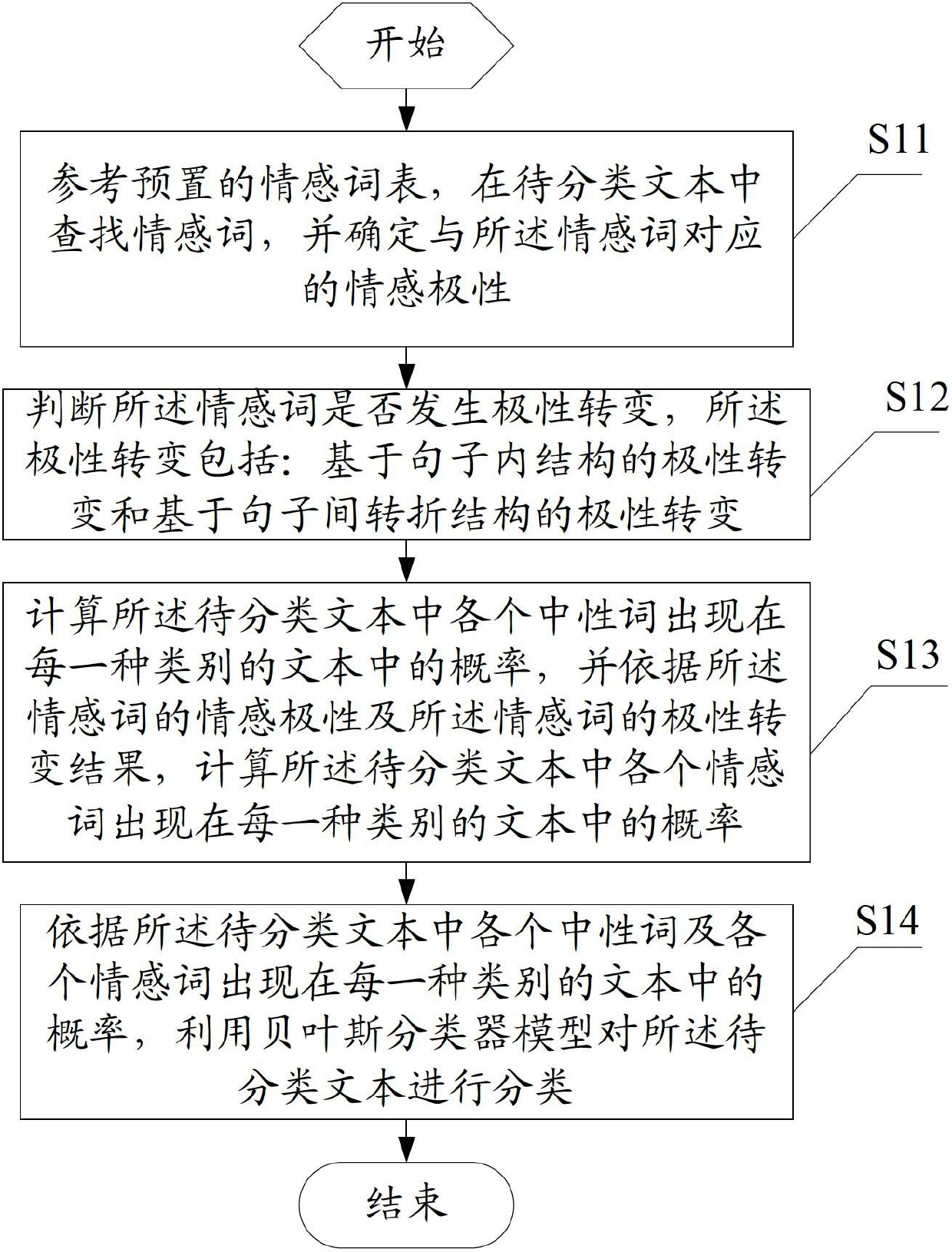Text sentiment classification method and system
A technology of emotion classification and text, applied in special data processing applications, instruments, electrical digital data processing, etc., can solve the problem of low accuracy rate of classification results, and achieve the effect of avoiding adverse effects and improving accuracy rate
- Summary
- Abstract
- Description
- Claims
- Application Information
AI Technical Summary
Problems solved by technology
Method used
Image
Examples
example 1
[0063] Example 1: I don't like this product.
[0064] In the sentence of example 1, if the emotional word is "like", and the keyword "no" with a negative structure appears in this sentence, then the polarity of the emotional word "like" has changed.
[0065] 2) Polarity transition rules based on modal structure:
[0066] Modality is related to the attitude of the reviewer, which is close to his / her expression in terms of degree of certainty, degree of reliability, degree of subject, degree of information source, and degree of opinion, which belongs to the category of sentiment classification research.
[0067] The polarity transition rule based on the modal structure is: if in the sentence where the emotional word is located, the keyword of the preset modal structure appears in front of the emotional word, then the polarity transition occurs in the emotional word; The rule is described below in combination with specific examples.
[0068] ①A sentence expresses the reviewer's...
example 2
[0069] Example 2: I used to think it was of good quality.
[0070] In the sentence of example 2, if the emotional word is "very good", and the keyword "ever" in the modal structure appears before the emotional word "very good", it means that this emotion expresses the past thoughts, not the present Thoughts, then the emotional word "very good" undergoes a polarity change.
[0071] ②A sentence describes a hypothetical situation or the expression of emotion in a conditional hypothetical sentence is a hypothetical situation, for example:
example 3
[0072] Example 3: It would be nice if the color was red.
[0073] In the sentence of example 3, if the emotional word is "good", and in the sentence, the keyword "if" of the modal structure appears in front of the emotional word "good", then the polarity of the emotional word "good" has changed .
[0074] ③The expression statement of a sentence is indeterminate, for example:
PUM
 Login to View More
Login to View More Abstract
Description
Claims
Application Information
 Login to View More
Login to View More - R&D
- Intellectual Property
- Life Sciences
- Materials
- Tech Scout
- Unparalleled Data Quality
- Higher Quality Content
- 60% Fewer Hallucinations
Browse by: Latest US Patents, China's latest patents, Technical Efficacy Thesaurus, Application Domain, Technology Topic, Popular Technical Reports.
© 2025 PatSnap. All rights reserved.Legal|Privacy policy|Modern Slavery Act Transparency Statement|Sitemap|About US| Contact US: help@patsnap.com



